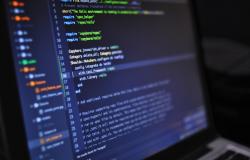Artificial Intelligence (AI) and Data Science-based Policy Response to COVID-19 in Low and Middle-income Countries

Tahir M. Nisar and Henry Agyei-Boapeah discuss how effectively low and middle-income (LMICs) can tackle the challenge of COVID-19 by designing and implementing AI and data science-based policy responses.
The second wave of the COVID-19 pandemic, which seems to be currently in full swing in many countries including some LMICs, may overwhelm the already weakened healthcare systems in LMICs (see commentary by Levison, 2020). Typically, emergency responses in LMICs suffer from resource constraints, social vulnerability and other factors relating to institutional and policy voids. Consequently, their efforts in fighting the present pandemic may be hampered by a general lack of understanding of the infection transmission patterns.
It is in this context that we need to better understand how artificial intelligence (AI) techniques could be deployed for contact tracing, scenario mapping and forecasting and how these approaches can be implemented more effectively in the LMIC contexts. However, when applying AI and data science approaches it is also important to pay heed to the local contexts, systems, and capabilities.
AI and data science-based policy response to COVID-19
Many LMICs must still address the lingering social and economic challenges that the first COVID-19 wave brought to the fore as these countries suddenly found themselves in the midst of a highly infectious disease. Countries like Iraq struggled to deal with the first wave by not being able to provide adequate quarantine facilities, personal protective equipment (PPE) and ambulances, as well as lacked adequate public awareness of the outbreak (see Mikhael and Al-Jumali, 2020).
However, this pandemic has generated massive amounts of information and data that can help both medical staff and policy makers to better understand the evolving nature of the disease and implement a more informed public health response to achieve early COVID detection, and to develop new diagnostic and planning tools that can support self-testing and public advice.
In Vietnam, Brazil and South Africa, public health authorities have used predictive modelling to inform their infection control policies and procedures, and in the process, helped to achieve effective medical triage and diagnosis. AI and data science technologies can also be useful in contact tracing. Contact tracing as an epidemiological tool monitors the transmission of COVID-19 (and infectious diseases, in general) so that people who are at risk of being infected can be identified and isolated. Combining advanced algorithms with mobile technology, the contact tracing tool can be employed on a massive scale to ensure that people are adhering to isolation periods through GPS and geolocation functionalities. Mobile technology and other digital and innovative tools can also be used to coordinate logistics to provide “isolating” people with food and other essential supplies, thus, helping to enforce the self-isolation measures (see some African Innovations during COVID-19).
Some African countries have implemented more creative approaches in dealing with COVID-19. Senegal developed a COVID-19 testing kit that was far cheaper than the ones developed in the UK and other European countries. Ghana followed a similar path, with an extensive system of contact tracing and “pool testing” innovative techniques in which individual tests are followed up only if a positive result is found from the testing of multiple blood samples. These steps resulted in a low death rate for COVID-19 in the Ghana and other developing countries (see Good Developments in Developing Countries).
Contact tracing and many other preventive initiatives taken by LMICs are driven by the assumption that AI and machine learning can be used to detect and address contagious diseases much earlier than the other traditional methods as they have the innate capacity for pattern recognition and can also fully take into account complex factors such as compliance rates, travel histories, and economic vulnerabilities. To make effective data-driven decisions in an outbreak situation such as COVID-19, AI and data science models can help forecast the location, timing and the size of the outbreak. This will then enhance the capacity for public officials to devise appropriate policy responses and interventions to curb COVID-19.
Furthermore, AI and data science tools can be used to conduct scenario planning and signal analysis to help limit the scope and spread of outbreaks and to facilitate efficient resource allocation. For example, Health officials in LMICs can employ AI-aided scenario analyses to redirect and refocus resources to ensure that highest priority health services are maintained. Likewise, dashboards can be used to highlight risks and hotspots, facilitating home self-testing and advice. Chatbots can also be employed to answer most queries automatically, demonstrating the value of algorithms and automation in outreach and information dissemination to the public.
In addition, drawing on AI and data science to fight COVID-19 could help to deliver gender equality and inclusion by helping to explore the differential impact of the crisis on males and females (see Casale and Posel, 2021) and taking steps to address the inequality as well as addressing the specific needs of other vulnerable groups that are highlighted by the AI technologies. For example, the current pandemic how the restrictive measures such as the lockdowns are correlated with increases in domestic violence and other forms of abuse (see UK Office for National Statistics Report). Effective use of AI and data science technologies could help to flag up such abuses for appropriate action to be taken.
Overall, AI and data science-based approaches have the potential to deliver high quality information to inform effective policies to fight COVID-19 and other infectious diseases. These approaches would be particularly useful for LMICs which generally lack the capabilities, including the physical health infrastructure to tackle their social and economic challenges. It will, thus, be important for such countries to have reliable policies/programmes that can effectively tackle COVID-19 at the early stage before it gets out of hand. In this regard, AI and data science-based approaches can be vital tools for shaping informed policy responses to infectious diseases.
Tahir M. Nisar is an Associate Professor within Southampton Business School University of Southampton, UK.
Henry Agyei-Boapeah is an Associate Professor in Accounting within Southampton Business School, University of Southampton, UK.
Photo by luis gomes from Pexels


